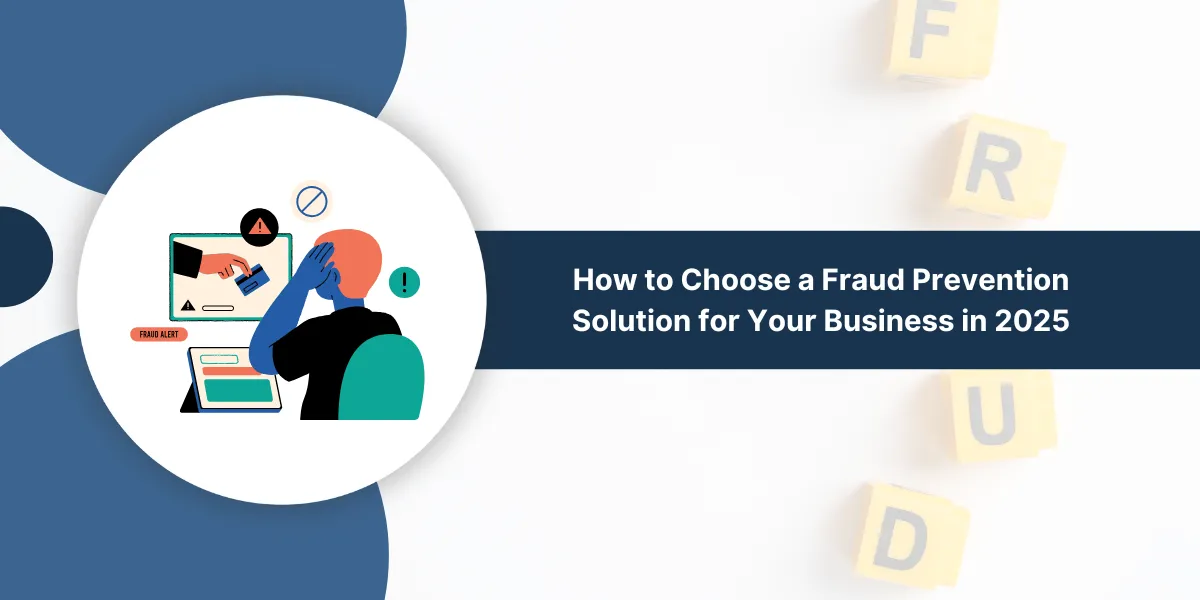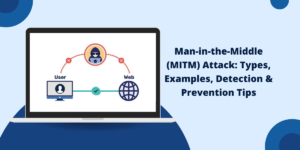The cost of fraud to businesses reached a staggering $5.4 trillion globally in 2024, with small and medium enterprises losing an average of $117,000 per incident. As we advance into 2025, the landscape of fraud has evolved dramatically, with AI-powered attacks becoming more sophisticated and traditional security measures proving inadequate.
Choosing the wrong fraud prevention solution can be catastrophic for your business, leading not only to financial losses but also damaged reputation, regulatory penalties, and loss of customer trust. However, selecting the right fraud solutions requires navigating a complex market filled with vendors making bold claims and technical jargon that can overwhelm decision-makers.
This comprehensive guide provides a clear, actionable framework for selecting the best fraud prevention solution for your specific business needs. You’ll learn how to assess your risk profile, evaluate different solution types, and implement a system that actually prevents fraud before it happens—not just detects it after the damage is done.
What Are Fraud Prevention Solutions and Why Your Business Needs One
What is a Fraud Prevention Solution and How Does It Work?
A fraud prevention solution is a comprehensive system designed to identify, analyze, and block fraudulent activities before they can harm your business. Unlike traditional fraud detection systems that alert you after suspicious activity occurs, prevention solutions work proactively to stop fraud in real-time.
Modern fraud solutions typically include:
- Real-time transaction monitoring that analyzes patterns as they happen
- Identity verification systems that authenticate users before granting access
- Behavioral analytics platforms that detect anomalies in user behavior
- Machine learning algorithms that adapt to new fraud patterns
- Risk scoring engines that assign threat levels to transactions
Types of Fraud Prevention Solutions: Which Is Best for Your Business?
| Solution Type | Primary Function | Best For | Implementation Time |
| Real-time Transaction Monitoring | Analyzes transactions as they occur | E-commerce, Financial services | 2-4 weeks |
| Identity Verification Systems | Authenticates user identities | Account creation, High-value transactions | 1-3 weeks |
| Behavioral Analytics Platforms | Detects anomalies in user behavior | Ongoing fraud prevention | 4-8 weeks |
| Machine Learning Solutions | Adapts to new fraud patterns | High-volume businesses | 6-12 weeks |
| Multi-factor Authentication | Adds security layers | All business types | 1-2 weeks |
Why Your Business Needs the Best Fraud Prevention Solution
Industry-specific fraud risks vary dramatically. E-commerce businesses face account takeovers and payment fraud, while financial services deal with identity theft and money laundering. Healthcare organizations combat insurance fraud and prescription abuse. B2B companies encounter invoice fraud and vendor impersonation.
Cost Analysis: Prevention vs. Fraud Losses
- Average cost of fraud per incident: $117,000
- Average cost of prevention solution: $25,000-$75,000 annually
- ROI timeline: 3-6 months for most businesses
- False positive reduction: 60-80% with proper implementation
How to Choose the Best Fraud Prevention Solution: 4-Step Framework
- How to Assess Your Business’s Fraud Risk Profile
- How to Define Your Fraud Prevention Solution Requirements
- How to Evaluate Different Fraud Solution Types
- Key Features to Look for in the Best Fraud Prevention Solution
Step 1: How to Assess Your Business’s Fraud Risk Profile
Before evaluating any fraud prevention solution, you must understand your unique risk landscape. Different industries face distinct fraud patterns, and your business size, transaction volume, and customer base all influence your vulnerability.
Industry-Specific Vulnerabilities:
E-commerce Fraud Patterns:
- Account takeover attacks affecting 22% of online retailers
- Payment fraud representing 3.6% of all e-commerce transactions
- Return fraud costing businesses $24 billion annually
- Chargeback fraud increasing by 20% year-over-year
Financial Services Risks:
- Identity theft affecting 1 in 3 financial institutions
- Application fraud growing 85% in digital banking
- Money laundering schemes becoming more sophisticated
- Regulatory fines averaging $2.9 million per violation
Healthcare Fraud Types:
- Insurance fraud accounting for 10% of healthcare costs
- Prescription fraud affecting 15% of pharmacies
- Medical identity theft targeting patient records
- Billing fraud in telehealth services
B2B Fraud Scenarios:
- Invoice fraud increasing 67% in remote work environments
- Vendor impersonation targeting supply chains
- Business email compromise losses of $43 billion globally
- Procurement fraud in digital transformation projects
Business Size Considerations:
|
Business Size |
Primary Fraud Risks |
Recommended Solution Type |
Budget Range |
|
Small (1-50 employees) |
Payment fraud, Account takeover |
Basic real-time monitoring |
$5,000-$15,000 |
|
Medium (51-200 employees) |
Multi-channel fraud, Identity theft |
Comprehensive platform |
$15,000-$50,000 |
|
Large (201+ employees) |
Advanced persistent threats |
Enterprise ML solution |
$50,000-$200,000+ |
Step 2: How to Define Your Fraud Prevention Solution Requirements
Technical Requirements: Your fraud prevention solution must integrate seamlessly with your existing systems. Key technical considerations include:
- API Availability: RESTful APIs for custom integrations
- Real-time Processing: Sub-second response times for transaction approval
- Scalability: Ability to handle 10x transaction volume growth
- Cloud vs. On-premise: Deployment flexibility for your infrastructure
- Data Security: End-to-end encryption and compliance certifications
Operational Requirements:
- User Interface: Intuitive dashboards for non-technical staff
- Reporting Capabilities: Customizable reports for compliance and analysis
- Alert Management: Configurable notifications and escalation procedures
- Case Management: Workflow tools for investigating suspicious activities
- Multi-language Support: Essential for global businesses
Compliance Requirements:
- PCI DSS Compliance: Mandatory for payment processing
- GDPR Considerations: Data protection for European customers
- SOX Compliance: Required for publicly traded companies
- Industry-specific Regulations: HIPAA, GLBA, or sector-specific requirements
Step 3: How to Evaluate Different Fraud Solution Types
Rule-based Systems: Traditional fraud solutions use predetermined rules to flag suspicious activities. While reliable for known fraud patterns, they struggle with evolving threats.
Pros:
- Predictable behavior and outcomes
- Easy to understand and customize
- Quick implementation timeline
- Lower false positive rates for established patterns
Cons:
- Cannot adapt to new fraud techniques
- High maintenance requirements
- Limited effectiveness against sophisticated attacks
- Requires constant rule updates
Machine Learning Solutions: Advanced fraud prevention solutions use AI to identify patterns and adapt to new threats automatically.
Advantages:
- Continuously improves detection accuracy
- Identifies previously unknown fraud patterns
- Reduces false positives over time
- Handles high-volume transactions efficiently
Limitations:
- Requires significant training data
- Less transparent decision-making
- Higher initial implementation costs
- Potential for algorithmic bias
Hybrid Approaches: The best fraud prevention solution often combines both rule-based and machine learning technologies, offering the benefits of each while mitigating their weaknesses.
Step 4: Key Features to Look for in the Best Fraud Prevention Solution
Essential Features Comparison:
|
Feature |
Importance |
Impact on Fraud Prevention |
Implementation Complexity |
|
Real-time Processing |
Critical |
Prevents losses immediately |
Medium |
|
Customizable Risk Scoring |
High |
Adapts to business needs |
High |
|
Multi-channel Support |
High |
Comprehensive protection |
Medium |
|
False Positive Reduction |
Critical |
Improves user experience |
High |
|
Reporting and Analytics |
Medium |
Enables optimization |
Low |
|
API Integrations |
High |
Seamless workflow |
Medium |
Best Fraud Prevention Solution Evaluation Criteria Checklist
Technical Performance Metrics for Fraud Prevention Solutions
Accuracy Rates: When evaluating any fraud prevention solution, request specific performance metrics:
- True Positive Rate: 85-95% for quality solutions
- False Positive Rate: Should be below 5% for good user experience
- Detection Speed: Sub-second response times for real-time prevention
- Scalability: Ability to process 100,000+ transactions per hour
Performance Benchmarks:
|
Metric |
Excellent |
Good |
Acceptable |
Poor |
|
Fraud Detection Rate |
>95% |
90-95% |
80-90% |
<80% |
|
False Positive Rate |
<2% |
2-5% |
5-10% |
>10% |
|
Processing Speed |
<100ms |
100-500ms |
500ms-1s |
>1s |
|
System Uptime |
>99.9% |
99.5-99.9% |
99-99.5% |
<99% |
How to Evaluate Fraud Prevention Solution Vendors
Company Reputation and Stability:
- Years in business and financial stability
- Customer retention rates above 90%
- Industry certifications and partnerships
- Case studies from similar businesses
Customer Support Quality:
- 24/7 support availability
- Average response time under 30 minutes
- Dedicated account management
- Training and onboarding programs
Implementation Timeline:
- Typical deployment: 4-12 weeks
- Pilot program duration: 2-4 weeks
- Full rollout timeline: 6-16 weeks
- Time to see ROI: 3-6 months
Cost-Benefit Analysis: What Should You Budget for Fraud Solutions?
Total Cost of Ownership:
|
Cost Component |
Percentage of Total |
Annual Cost Range |
|
Software License |
40-60% |
$15,000-$75,000 |
|
Implementation |
20-30% |
$10,000-$50,000 |
|
Training |
5-10% |
$2,000-$10,000 |
|
Ongoing Support |
15-20% |
$5,000-$25,000 |
|
Infrastructure |
10-15% |
$3,000-$15,000 |
ROI Calculation:
- Average fraud loss prevented: $500,000-$2,000,000 annually
- Solution cost: $50,000-$150,000 annually
- Net ROI: 300-1,200% within the first year
- Payback period: 2-6 months for most businesses
Fraud Prevention Solution Implementation Best Practices
Pre-Implementation Planning for Your Fraud Prevention Solution
Team Assembly: Successful implementation requires cross-functional collaboration:
- Project Manager: Oversees timeline and deliverables
- IT Security: Handles technical integration
- Operations: Manages day-to-day workflow changes
- Compliance: Ensures regulatory requirements
- Finance: Monitors budget and ROI
Timeline Development:
- Week 1-2: Requirements gathering and vendor selection
- Week 3-4: Contract negotiation and system preparation
- Week 5-8: Pilot program implementation
- Week 9-12: Full deployment and staff training
- Week 13-16: Optimization and performance monitoring
Best Practices for Deploying Your Fraud Prevention Solution
Pilot Program Approach: Start with a limited deployment to test the fraud prevention solution before full rollout:
- Select 10-20% of transactions for initial testing
- Run parallel with existing systems for comparison
- Gather feedback from key stakeholders
- Measure performance against established benchmarks
Gradual Rollout Phases:
- Phase 1: Low-risk transaction types
- Phase 2: Medium-risk scenarios
- Phase 3: High-value transactions
- Phase 4: Full system activation
Post-Implementation: How to Optimize Your Fraud Prevention Solution
Fine-tuning Parameters:
- Adjust risk scoring thresholds based on actual performance
- Customize rules for your specific business patterns
- Update ML models with new fraud data
- Optimize false positive rates without compromising security
Performance Monitoring:
- Daily fraud prevention effectiveness reports
- Weekly false positive analysis
- Monthly ROI assessment
- Quarterly system performance review
Common Mistakes When Selecting Fraud Solutions
Don’t Choose a Fraud Prevention Solution Based on Price Alone
The cheapest fraud prevention solution often becomes the most expensive when you factor in:
- Higher fraud losses due to poor performance
- Increased staff time managing false positives
- Integration costs with inadequate APIs
- Compliance penalties from security gaps
Why Integration Requirements Matter for Fraud Solutions
Many businesses underestimate the complexity of integrating fraud solutions with existing systems:
- Legacy system compatibility issues
- API limitations affecting functionality
- Data migration challenges
- Staff training requirements
How Long Does It Take to Implement a Fraud Prevention Solution?
Average Implementation Timeline by Solution Type:
|
Solution Type |
Planning |
Implementation |
Training |
Total Time |
|
Basic Rules-based |
2 weeks |
4 weeks |
1 week |
7 weeks |
|
ML-powered Platform |
4 weeks |
8 weeks |
2 weeks |
14 weeks |
|
Enterprise Solution |
6 weeks |
12 weeks |
3 weeks |
21 weeks |
The Importance of User Training for Fraud Prevention Solutions
Even the best fraud prevention solution fails without proper user training:
- 73% of implementation failures attributed to inadequate training
- Average training time: 16 hours per user
- Ongoing education requirements: 4 hours quarterly
- ROI improvement: 40% with comprehensive training programs
Future-Proofing Your Fraud Prevention Solution for 2025 and Beyond
Emerging Fraud Trends That Will Impact Your Solution Choice
Artificial Intelligence Fraud:
- AI-generated synthetic identities increasing 300%
- Deepfake technology in account takeovers
- Machine learning attacks against fraud systems
- Automated social engineering campaigns
Cryptocurrency and Digital Payment Fraud:
- Crypto-related fraud growing 600% annually
- Digital wallet vulnerabilities
- Cross-border payment fraud
- Decentralized finance (DeFi) exploitation
Internet of Things (IoT) Fraud:
- Connected device vulnerabilities
- Smart home security breaches
- Automotive fraud through connected cars
- Healthcare IoT device exploitation
Technology Evolution: What to Consider When Choosing Fraud Solutions
Your fraud prevention solution should accommodate:
- Quantum computing threats: Encryption-breaking capabilities
- 5G network vulnerabilities: Faster but less secure connections
- Biometric authentication advances: Fingerprint and facial recognition
- Blockchain integration: Immutable transaction records
How to Evaluate Your Fraud Prevention Solution Vendor’s Roadmap
Key Questions to Ask Vendors:
- How will your solution adapt to quantum computing threats?
- What’s your investment in AI and machine learning development?
- How do you handle emerging payment methods and cryptocurrencies?
- What’s your plan for integrating with Web3 and metaverse platforms?
Final Words
Selecting the best fraud prevention solution for your business requires a systematic approach that goes beyond comparing features and prices. The most effective fraud solutions are those that align with your specific risk profile, integrate seamlessly with your existing systems, and provide measurable ROI while adapting to evolving threats.
When to Start: Don’t wait until you’ve experienced a major fraud incident. The average business loses $117,000 per fraud event, while prevention solutions typically cost $25,000-$75,000 annually. Starting your selection process now can save your business hundreds of thousands of dollars while protecting your reputation and customer trust.

Priya Mervana
 Verified Web Security Experts
Verified Web Security Experts
Priya Mervana is working at SSLInsights.com as a web security expert with over 10 years of experience writing about encryption, SSL certificates, and online privacy. She aims to make complex security topics easily understandable for everyday internet users.



